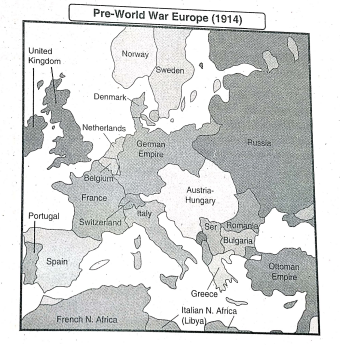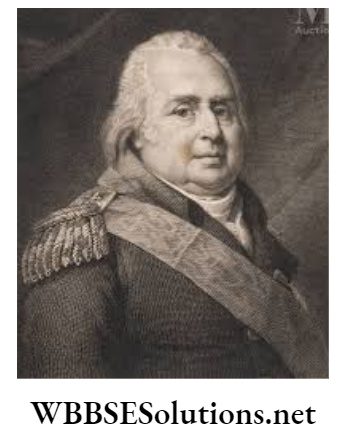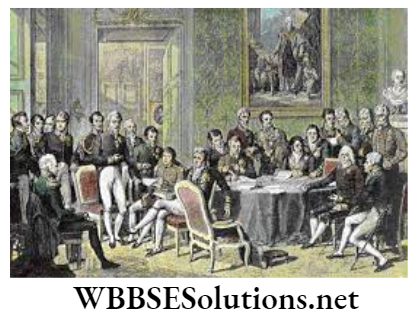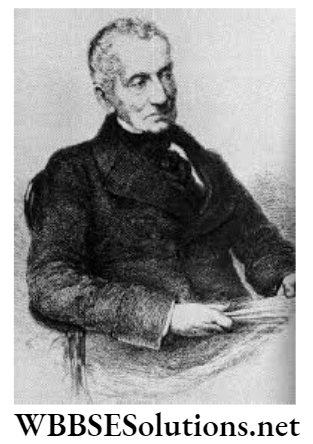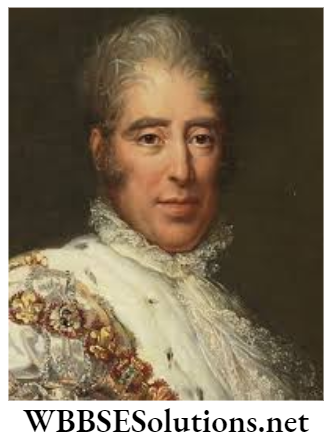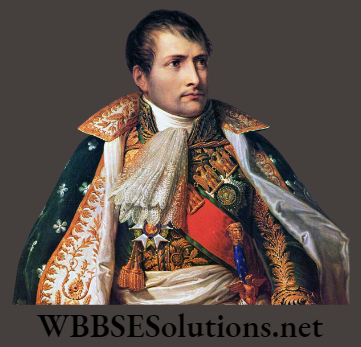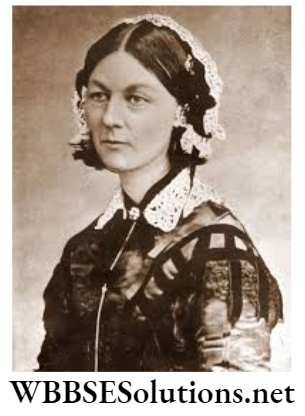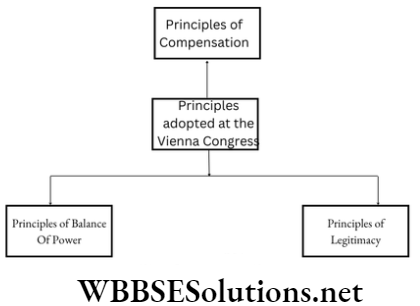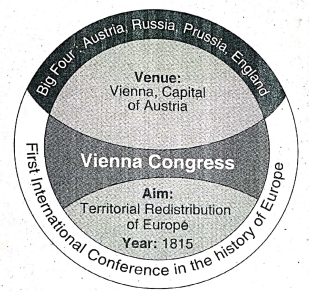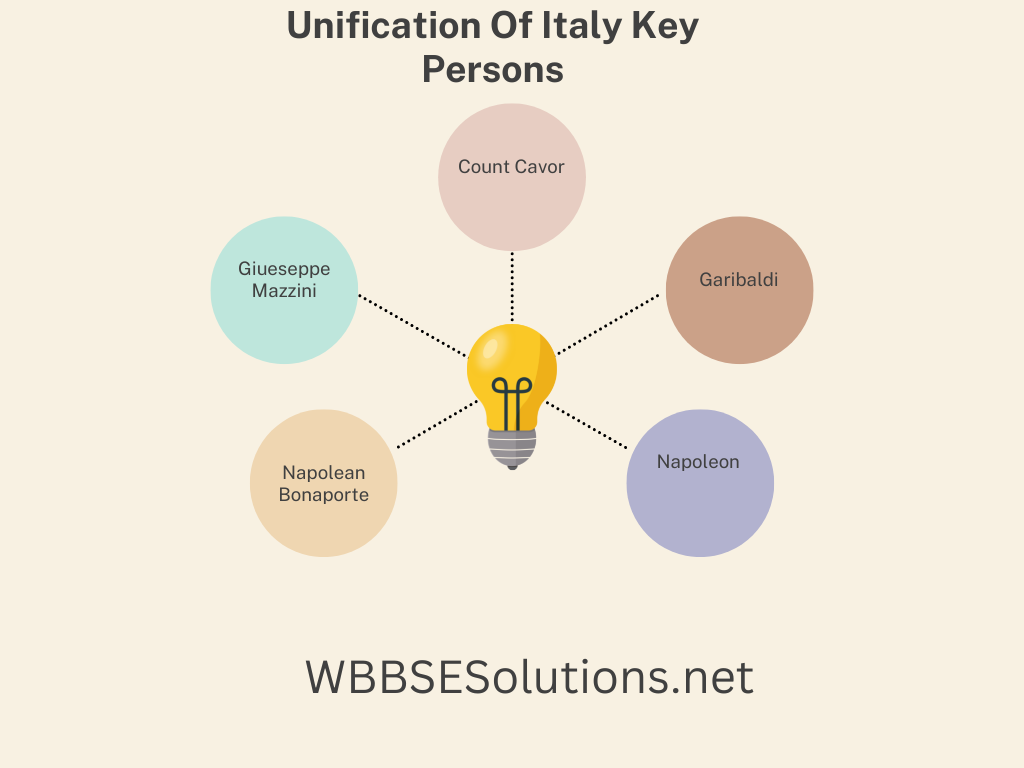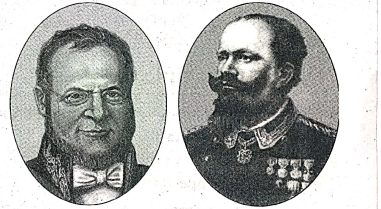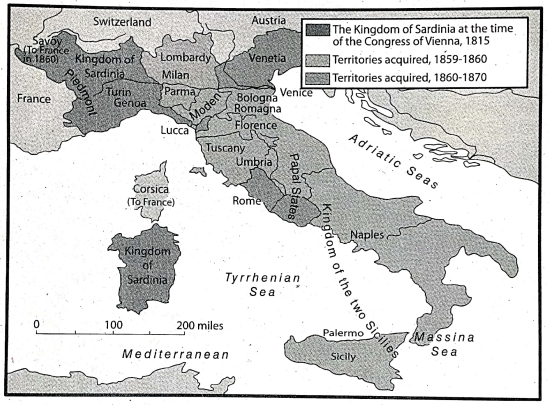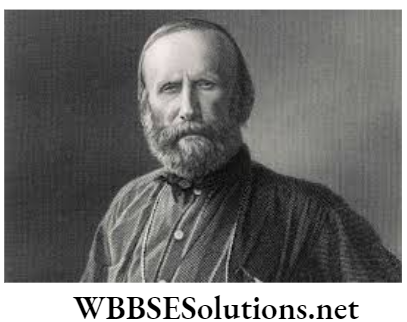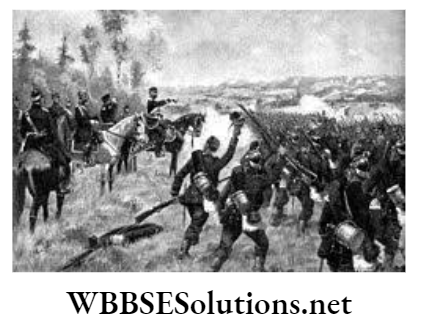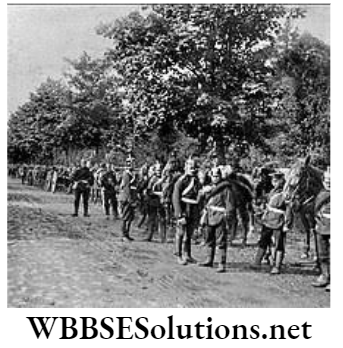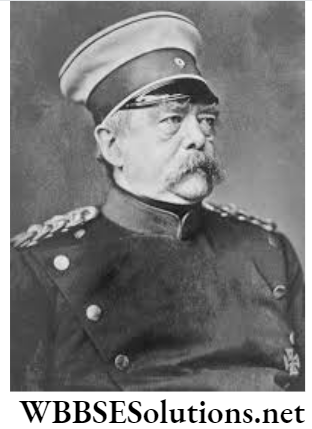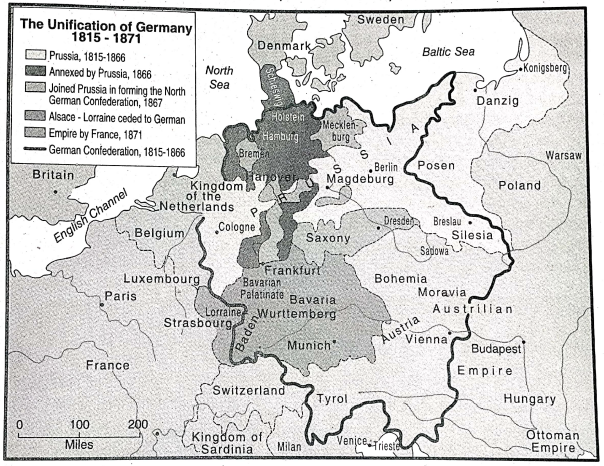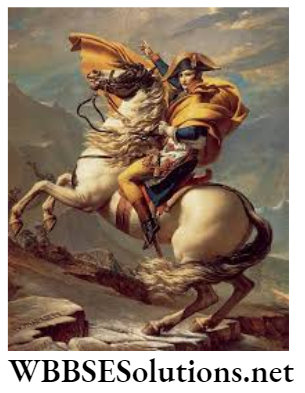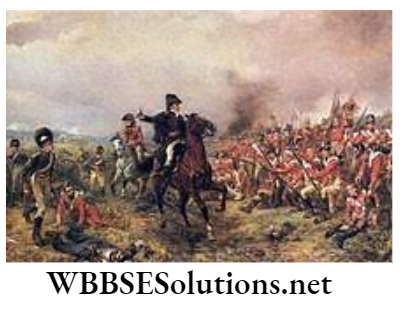WBBSE Class 9 History Chapter 4 Industrial Revolution, Colonialism And Imperialism Topic A Industrial Revolution
Question 1. What were the economic, political and social effects of the Industrial Revolution?
Answer:
Economic, Political And Social Effects Of The Industrial Revolution:-
The effects of the Industrial Revolution was far-reaching. It had effects on the economy, society and polity.
[1] Economic Effects:
The Industrial Revolution led to the decline of small-scale industries and resulted in the rise of the factory system. It led to the division of labour, and specialisation in output and created an unprecedented supply of goods. This led to a scramble for colonies amongst the European powers because colonies supplied cheap raw materials for factories and ready markets for finished goods. The invention of machines threw a large number of workers out of jobs and many became unemployed.
Read and Learn More WBBSE Class 9 History Long Answer Questions

[2] Social Effects:
There was a large-scale migration of workers from rural to industrial areas. The workers were forced to work for very long hours. The living condition of the workers of the factories was horrible. Women and children were employed in large numbers in factories and were mercilessly exploited. An unbridgeable gulf was created between the capitalists and the labourers.
WBBSE Class 9 History
[3] Political Effects:
As a result of the Industrial the status of newly Revolution industrialised nations were greatly increased in international politics. The newly emerged capitalist class came forward to participate in politics. Industrial workers, in course of time, became a great political force. The Spirit of communism and socialism flourished in England due to ‘the labour movement. The socialists raised voices of protest against the atrocities of the capitalists and the government was forced to pass some factory acts.
Question 2. Make a comparative study of the Industrial Revolution in England and the continent.
Answer: The Industrial Revolution first started in England in the 18th century. Big mills and factories were established where goods of daily necessity were manufactured. England became the ‘workshop of the world’.
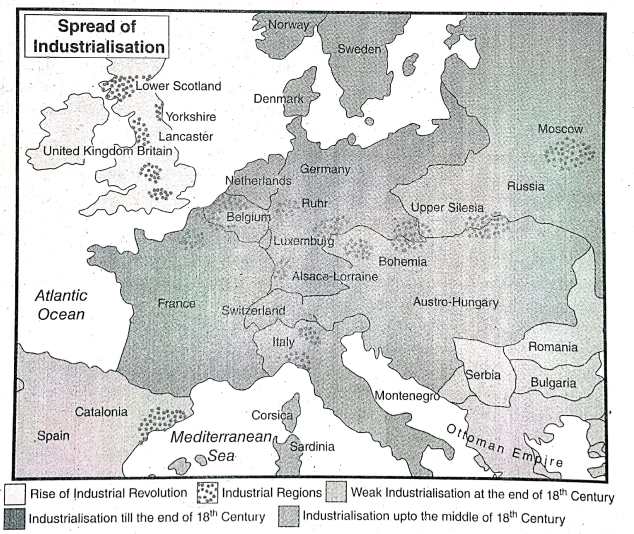
Industrialisation started rather late in France due to the French Revolution. Another major problem in the development of French industry was the scarcity of coal. While in England the Industrial Revolution had been the contribution of the capitalist class, in France industrialisation was achieved mainly through the governmental initiative. By 1848 France became an industrial power but it lagged behind England. France was second to England in 1870 so far as the export of industrial products were concerned.
WBBSE Class 9 History
As compared to England, industrialisation started late in Germany also, as Germany was divided into numerous small states. The real beginning of the Industrial Revolution in Germany was only after her national unification in 1870. Once it has begun, Germany’s industrial production grew rapidly and Germany outstripped Britain in steel and became the world leader in
chemical industries.
The real beginning of the Industrial Revolution in Russia dates from 1861 after the telegram Emancipation Statute of 1861 was passed. It system played an important part in establishing was not until the Five-Year Plan that the Soviet Union became a major industrial power.
Question 3. What were the effects of British industrialisation on India?
Answer:
British Industrialisation On India:-
The principal motive for the coming of the English East India Company was to participate in and make profits from trade but over time India was reduced to the status of a British colony. Indian silk and cotton had a wide market in Britain but with the coming of the Industrial Revolution, the whole scenario changed.
The effects of British industrialisation on India were:
[1] India was flooded with cheap machine-made goods whereby Indian textiles lost their market in India also.
[2] Laws were passed in Britain to prohibit and restrict the sale of Indian goods.
[3] India was reduced to cotton, silk, and indigo) and importer of British machine-made goods.
[4] The desire for new markets for British goods resulted in Britain’s undertaking fresh conquest in India.
[5] Free and unrestricted supply of British goods proved detrimental to Indian handicrafts as they were faced with unequal competition of machine-made goods.
[6] The self-sufficiency of Indian villages came to an end.
[7] There was stagnation in Indian agriculture. The British did nothing to improve Indian agriculture.
Class 9 History Solutions WBBSE
Question 4. Give a brief account of the development of the telegraph system.
Answer:
Brief Account Of The Development Of The Telegraph System:-
Telegram is the device or system for transmitting messages to a distant place by making and breaking electrical connections. It was the first form of communication that could be sent over a great distance. Its creation was one of the key inventions to the industrial age. The use of telegram became very popular from the middle of the 19th century. The telegram system played an important part in establishing and expanding colonies by the industrially developed countries.
In India, the first experimental electric telegram line was started between Calcutta and Diamond Harbour (1850). In 1851 it was opened for the use of the British East India Company. In 1854 telegram link was established between Calcutta and Agra, Bombay and Madras.
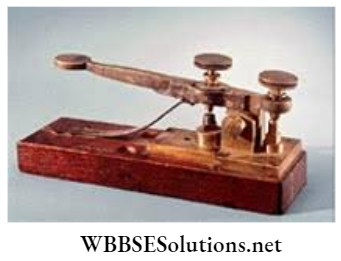
A Telegram line of 20,000 miles was established in America in 1851. In 1866 when Atlantic Cable was installed, a link could be established between England and America. As a result, England’s imperialistic rule was consolidated in America. Telegram was also introduced in the colonies of Africa. A company of Denmark established a telegram system in China in 1871. In 1872 the first telegram system was introduced in Australia and later on in Malay, Vietnam and other places.
As a result of the introduction of a telegram, the European powers were able to establish quick control over the colonies. Foreign control over the colonies was strengthened. Trade of the industrialised countries was increased.
Class 9 History Solutions WBBSE
Question 5. Give an account of the socialist movement in Europe.
Answer:
Socialist Movement In Europe:-
The Industrial Revolution led to the decline of small-scale industries and encouraged the rise of the factory system. The living condition of the workers of the factories was terrible. The socialists raised their voices of protest against the dismal condition of the workers created by industrialisation.
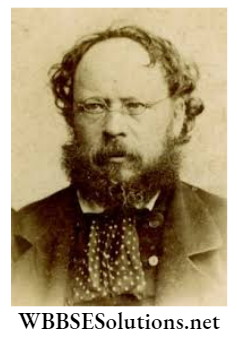
[1] Robert Owen, a humanitarian factory owner upheld the view that the capitalists should share a portion of his profits with his employees. As a factory owner, he introduced many benefits for the workers.
[2] Fourier, a Frenchman pleaded for a new social organisation based on cooperative communities.
[3] Another socialist thinker was St. Simon who advocated that the state should assume control of production and distribution. [4] Proudhon wanted to abolish private ownership of property.
Class 9 History Solutions WBBSE
[5] Louis Blanc, a French thinker advocated that the state must come forward to protect the rights of workers and make laws. He condemned the accumulation of unlimited profit of the employer and advocated that the profit should be equitably divided between the landlord and workers.
[6] Other socialists were Philippe Buonarroti, Auguste Blanqui. They condemned competition which led to the exploitation of workers.
[7] The greatest advocates of socialism were Karl Marx and Friedrich Engels. To them, history was a class struggle, especially between the upper middle classes and the proletariat. In the ‘Communist Manifesto’ Marx made an appeal to the workers of the world to unite.
Question 6. What was the role of Karl Marx in the Ka spread of socialism?
Answer:
Role Of Karl Marx In The Ka Spread Of Socialism:-
In the first half of the 19th century the ideals of Utopian Socialism was very popular, but Utopian Socialism failed to show the right path to society.
In the second half of 19th century, Karl Marx (1818-83) made popular his ideas of scientific socialism which is also known as ‘Marxism’. As he was a radical thinker he was banished from his homeland Prussia and he took shelter first in France and then in Brussels in Belgium. In 1843 he moved to Paris where he formed his lifelong friendship with Friedrich Engels (1820-95) and established the ‘Communist League’ with his help.
Class 9 History Book West Bengal Board WBBSE
In 1864, he convened the International Working Men’s Association which was also known as the First International. Marx, as the leader of this organisation, tried to lay down the strategy and tactics for the unification of the workers of the world. In 1848, Marx and Engels brought out the famous Communist Manifesto. “Workers of the World unite: You have nothing to lose but your chains and a world to win” were the inspiring words of the Manifesto.
Marx wrote that few men who owned the factories exploited workers because these people depended on them. Marx wanted working people to revolt. If they did so, the wealth could be distributed among all, and not remain concentrated in the hands of a few people.
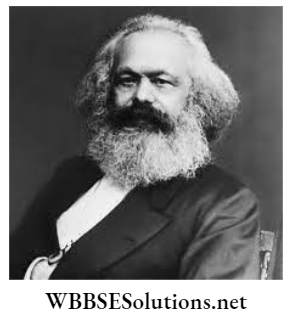
While in London he brought out his great work ‘Das Capital’ in 1867 and established his claim to be regarded as the founder of modern socialism. In this book, capitalism was criticised and class struggle was emphasised. The book is called the Bible of Socialism.
The important principles of Marxism are:
[1] Historical materialism.
[2] Surplus capitalism.
[3] Class struggle and
[4] Revolution.
Class 9 History Book West Bengal Board WBBSE
Karl Marx did not live to see the fulfilment of his dream. He had given hope to the oppressed section of the people all over the world. The value of Marxism lies in the hope and aspiration it has aroused among the suffering humanity holding out to them the prospect of a better and happier world to live in.
Chapter 4 Industrial Revolution, Colonialism And Imperialism Topic B Colonialism and Imperialism
Question 1. What were the causes of the scramble for Africa?
Answer: During the 1800s, there was a rush among the European countries to establish their colonies in Africa which is known as the ‘Race. for Africa’ or the ‘Scramble for Africa’. There were many causes of the scramble for Africa which are discussed below.
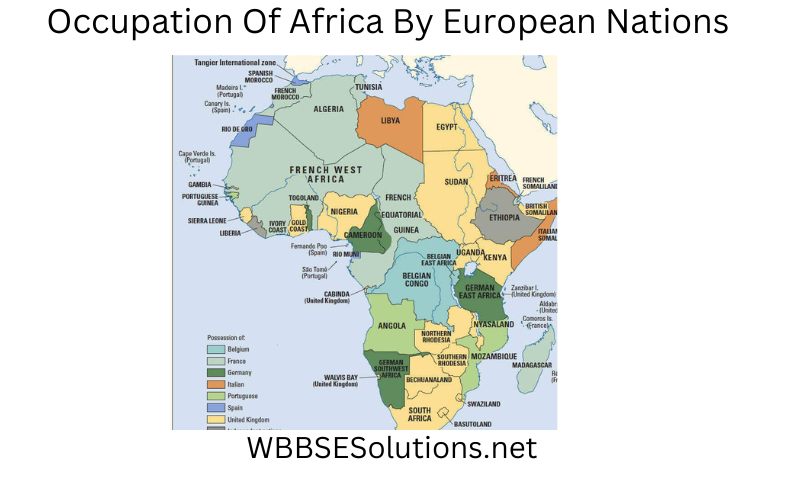
[1] The Industrial Revolution first started in England and then spread to all other parts of Europe. The factories which were established to produce different types of things needed raw materials such as cotton, coal, iron ore and others. Africa was a very rich source of all such raw materials. So the various European countries competed with each other to establish their colonies in Africa.
[2] After the Industrial Revolution when new machines have introduced the rate of production increased manifold. They not only met the demand of the people but also generated surplus goods. The Europeans required a big market to sell these extra goods and a vast country like Africa was a good market for them.
Class 9 History Question Answers WBBSE
[3] Africa is rich in gold, diamonds, rubies and precious stones. The Europeans took Africa to be a rich source for making money.
[4] There were some other causes for the scramble for Africa. Some countries desired to establish their colonies only because other countries already had their colonies in Africa.
|
[5] Moreover, there were some countries which thought that the strength of a country depends on the number of colonies it had. So they wanted to establish their colonies in Africa.
Question 2. Which country got the epithet ‘The jewel in the crown of the British empire’? Give an account of the transformation of India from an exporter to an importer.
Answer: India got the epithet ‘The jewel in the agreement was reached in 1925 between Italy crown of the British empire’.
The transformation of India from an exporter to an importer is an interesting chapter in the economic history of India. In the 18th century, English merchants used to purchase Indian goods and earn profit by selling these in England and other European countries. In the 19th century changes took place in the nature of trade between England and India.
During this period Britain did not import manufactured goods from India; on the other hand, Indian markets were flooded with British goods and India, which was so long a manufacturer and exporter of finished goods, became an exporter of agricultural products like indigo, cotton, jute and wheat.
The transformation of India from an exporter to an importer were due to several reasons:
[1] In 1700 the British government prohibited the use of Bengal silk clothes. In 1720 the British Parliament passed an act prohibiting the import of coloured cotton cloths and imposed huge taxes on cotton goods imported in England.
[2] When the Industrial Revolution broke out in England there was a total change in the system of production, huge quantities of goods were produced. Raw materials were necessary for the industries and Britain also needed a ready market for selling her surplus finished goods.
[3] By the Charter Act of 1813 the monopoly of East India Company’s trade with India was abolished and a policy of free trade was introduced. As a result more British merchants began to arrive in India to flood Indian markets with machine-made British commodities.
Class 9 History Question Answers WBBSE
Question 3. What policy did Mussolini take to fulfil his imperial design in Ethiopia?
Answer: Mussolini, the Fascist dictator of Italy, became hungry for colonies. Mussolini had been eager to bring the East African country of Ethiopia (Abyssinia) under Italian sway and to exploit its raw materials and minerals.
An agreement was reached in 1925 between Italy and Britain which promised Italy certain concessions in Ethiopia. Ethiopia vainly protested to the League of Nations against the foreign sphere of influence in Ethiopia.
In 1928 a treaty of perpetual friendship and arbitration was concluded between Italy and Ethiopia. When Haile Selassie became the emperor of Ethiopia he turned down the request of Italy for concessions and favour. In 1934 there occurred a clash between the Ethiopian force and the Italian.
Troops near the villagers of Walwal. The Italian government demanded an apology and compensation from the Ethiopian government. Emperor Haile Selassie appealed to the League of Nations for protection. At League Council’s suggestions representatives of Britain, France and Italy met at Paris (1935).
Britain and France agreed to give Italy extensive economic rights in Ethiopia. While the League Commission was in Abyssinia, Italy launched an attack on Abyssinia. The League Council declared Italy an aggressor nation and imposed economic blockade on Italy. The partial economic sanction could not put any pressure upon Italy. Italy defied the League of Nations and resigned from its membership. In 1936 Ethiopia was formally annexed to Italy.
Question 4. What was the role of Suez Canal in the development of the communication transportation system?
Answer: Along with the expansion of industrialisation attention of the European countries was drawn to the use of waterways for carrying goods like coal, iron etc. So side by side with the existing waterways canals began to be constructed. Industrialised countries in different parts of the world constructed a number of artificial canals to make journeys faster and easier.
The most important of all these canals was the Suez Canal. It was difficult for the western industrialised countries to maintain commercial relationships with the eastern countries covering long distances.
It was also a huge waste of time and money. To make the journey between the East and the West faster, digging of the Suez Canal through Egypt by France began in 1859. In 1869 the Canal was opened commercially and ships began to pass through the Suez Canal.
From 1869 England, France, Germany, Denmark, Belgium, Spain, Portugal and other European countries began to use this canal extensively to maintain trade relations with the eastern countries. Universal Suez Canal Company took the responsibility of the canal for 99 years on the basis of a contract.
To maintain security of the Suez Canal the British government got the right to station British soldiers in this region upto 1956. So though the Suez Canal was an integral part of Egypt it lost control over the Suez Canal and its adjacent areas.
Class 9 History Question Answers WBBSE
The European countries could easily keep close contact with the eastern countries through the Suez Canal. Imperialist control over the eastern countries was much more strengthened. British control over India became stronger. Through the control of Suez Canal region Anglo-French supremacy in middle and east Africa was gradually strengthened.
Question 5. Give an account of the western bid for supremacy in China.
Answer: For thousands of years since the isolation but the western powers were keen to establish contact with her. In the mid- attempts to penetrate the Chinese empire. nineteenth-century Britain and USA made traders. Opium in large quantities were Opium was introduced in China by the English and imported in China by the British. All classes of Chinese people gradually became addicted to opium.
The Chinese government issued orders putting a bar on the import of opium. War broke out when the Chinese seized British vessels carrying opium and destroyed their cargo. In the First Opium War (1839-42) the Chinese were defeated by the British and the Treaty of Nanking was concluded between Britain and China.
The Treaty of Nanking
[1] legalized the opium trade.
[2] opened up five ports including Canton to foreign trade.
[3] ceded Hong Kong to the British.
[4] proclaimed that the British subjects would no longer be subject to Chinese law and
[5] made China pay war indemnity.
France and England took advantage of China’s weakness and declared war. The Second Opium War (1857-58) like the first war ended in China’s defeat.
The Tientsin Treaty (1861) which ended the war
[1] opened eleven more ports to foreign trade,
[2] compelled China to set up foreign mission in Beijing
[3] pay heavy war indemnity and
[4] admit that foreign residents in China would be under the laws of their respective countries and not the laws of China. After
1860 the ambition of the European powers continued to grow. They now wanted more territories. Russia, France and England obtained bases of territories or spheres of influence in China.
Japan too followed their example and declared war on China (1894-95) and compelled China to surrender. The weakness of China encouraged the western powers to make fresh bids for territorial gains in China, but it was soon found that the gains obtained by one power at China’s expense made other powers jealous. In other words, while many powers wanted to cut China into slices as if it was a melon, the interests of one power came into conflict with those of another.
Class 9 History WBBSE
The western powers were torn with jealousies against one another, to such an extent that they had little hesitation in accepting the Hay Memorandum (1901) which recommended
[1] equal opportunities for all nations to trade in China,
[2] that the western powers should throw their respective spheres of influence open to all and
[3] above all, they should guarantee the territorial integrity of China. Thus China was saved from being partitioned among the western powers.
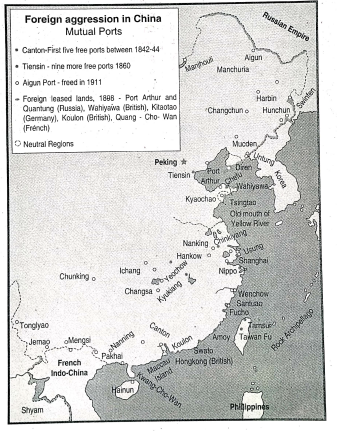
Question 6. What were the causes of the First World War?
Answer: The outbreak of the First World War on July 28, 1914, is the most outstanding event of the early 19th century. Its causes were many and varied. patriotism had degenerated into ultra-nationalism.
[1] One of the most important causes of the war was militarism. All the states were afraid of one another. Germany formed the Triple Alliance with Italy and Austria (1882) and France formed the Triple Entente with England and Russia (1907). In order to gain supremacy over the sea Germany built many ships which caused suspicion to other European powers, especially to France and England.
Class 9 History WBBSE
[2] Another cause of the war was exaggerated nationalism. In some European states, nationalism and War I within a short period.
[3] Imperialism was also anxious to establish colonies in Asia and Africa important cause of the war. Germany was but could not do so as France and England were Germany.
[4] The immediate cause of the war against her. This caused resentment in was the murder of the Austrian Archduke, Francis Ferdinand and his wife Sophia at Sarajevo in Bosnia in 1914. They were murdered by Gavrilo Princip, a member of the ‘Black Hand’ terrorist organisation. The government of Austria attributed the murder to Serbian intrigue. This attack of Austria on Serbia ultimately led to the outbreak of World War within a short period.
